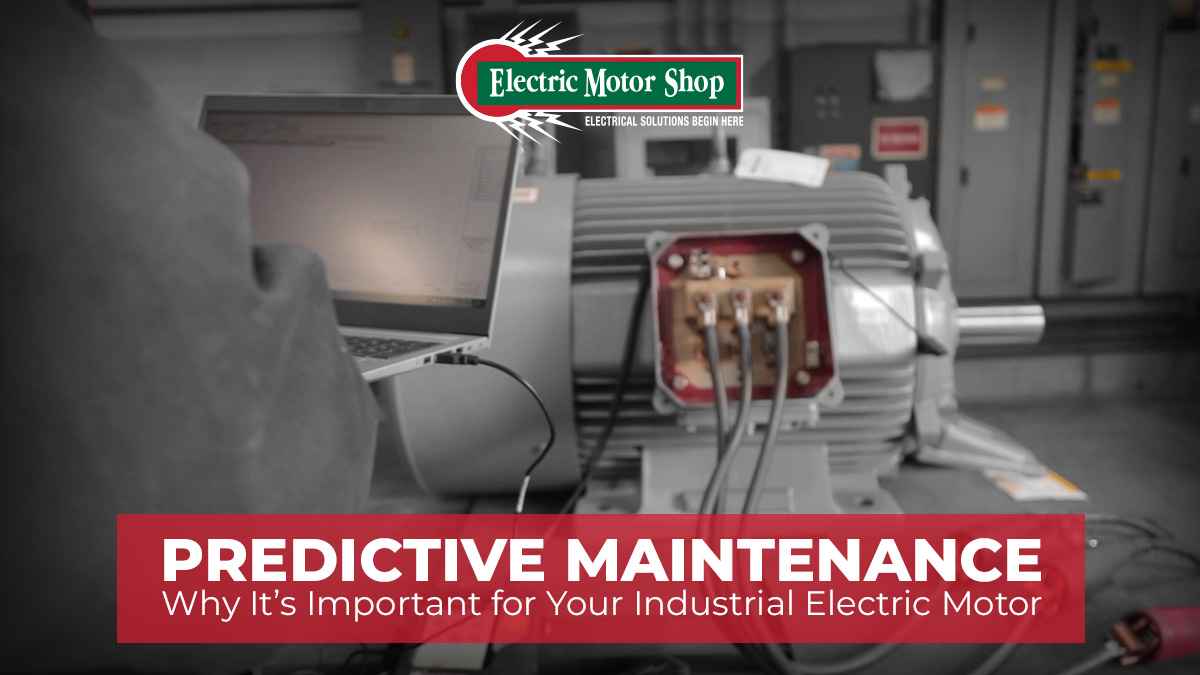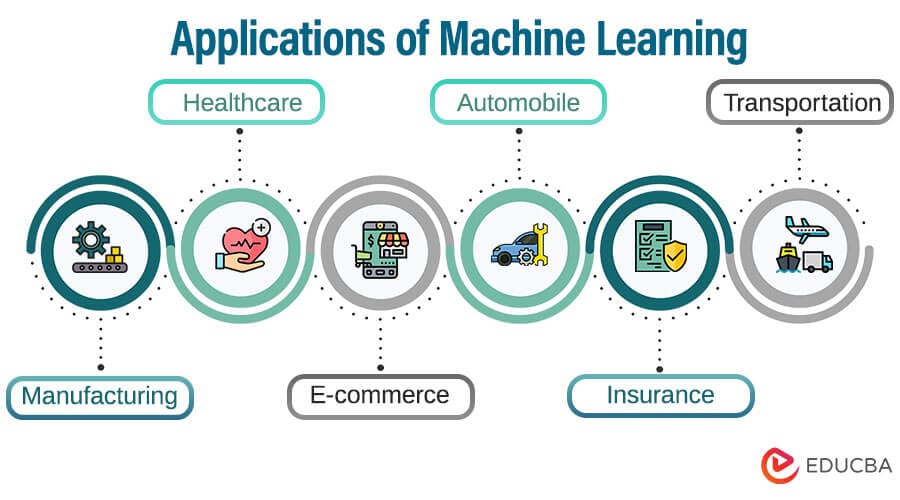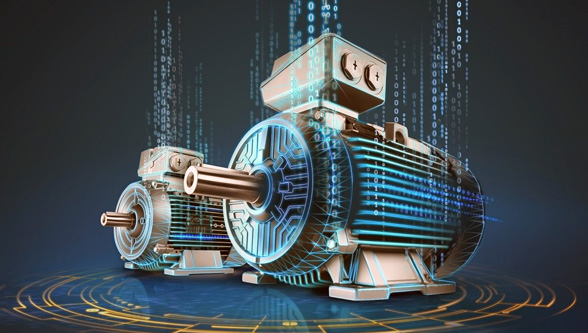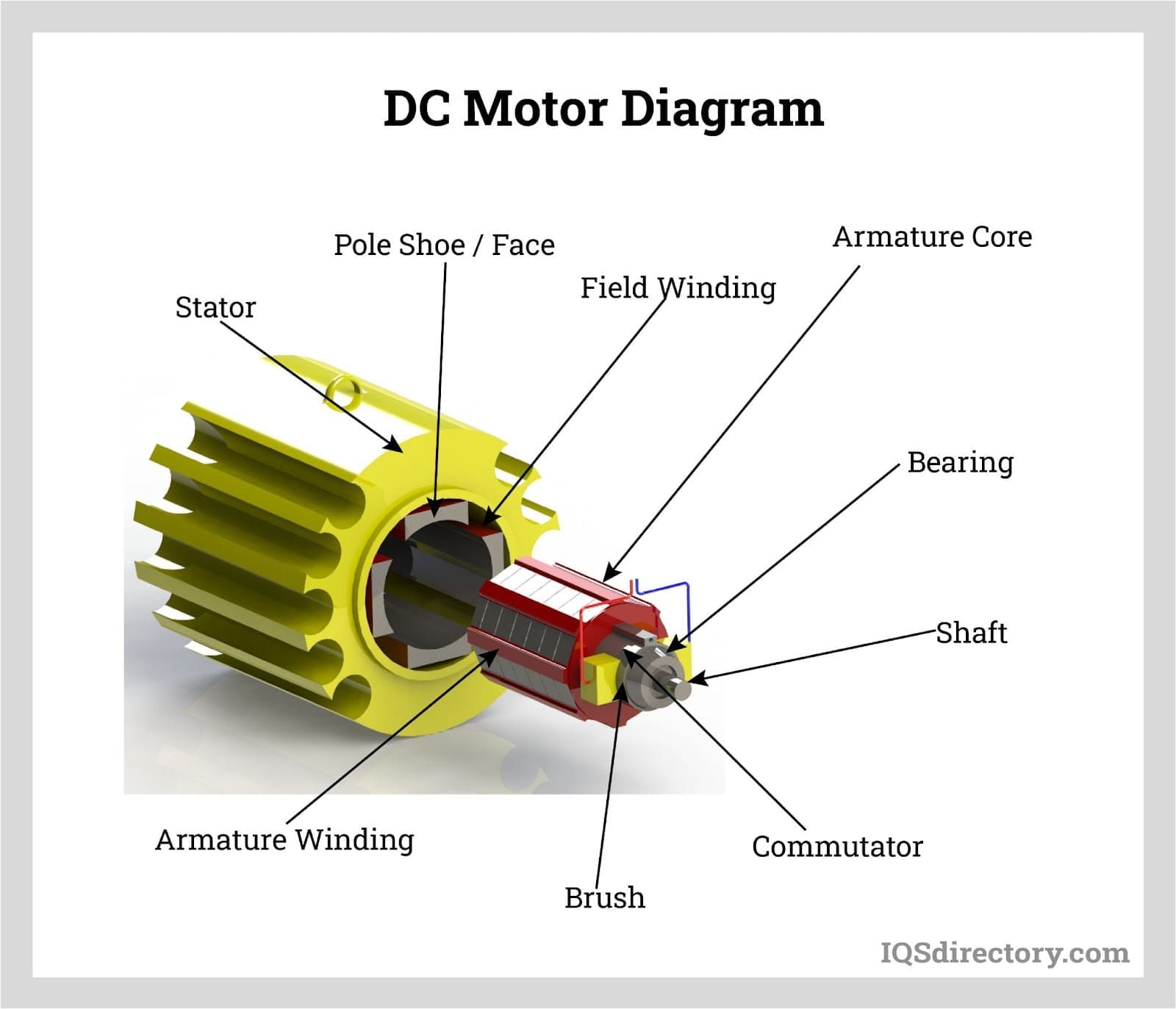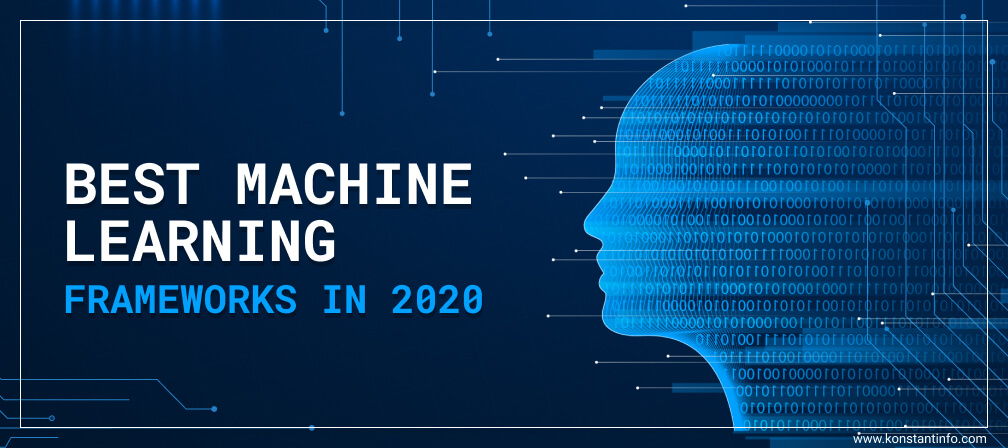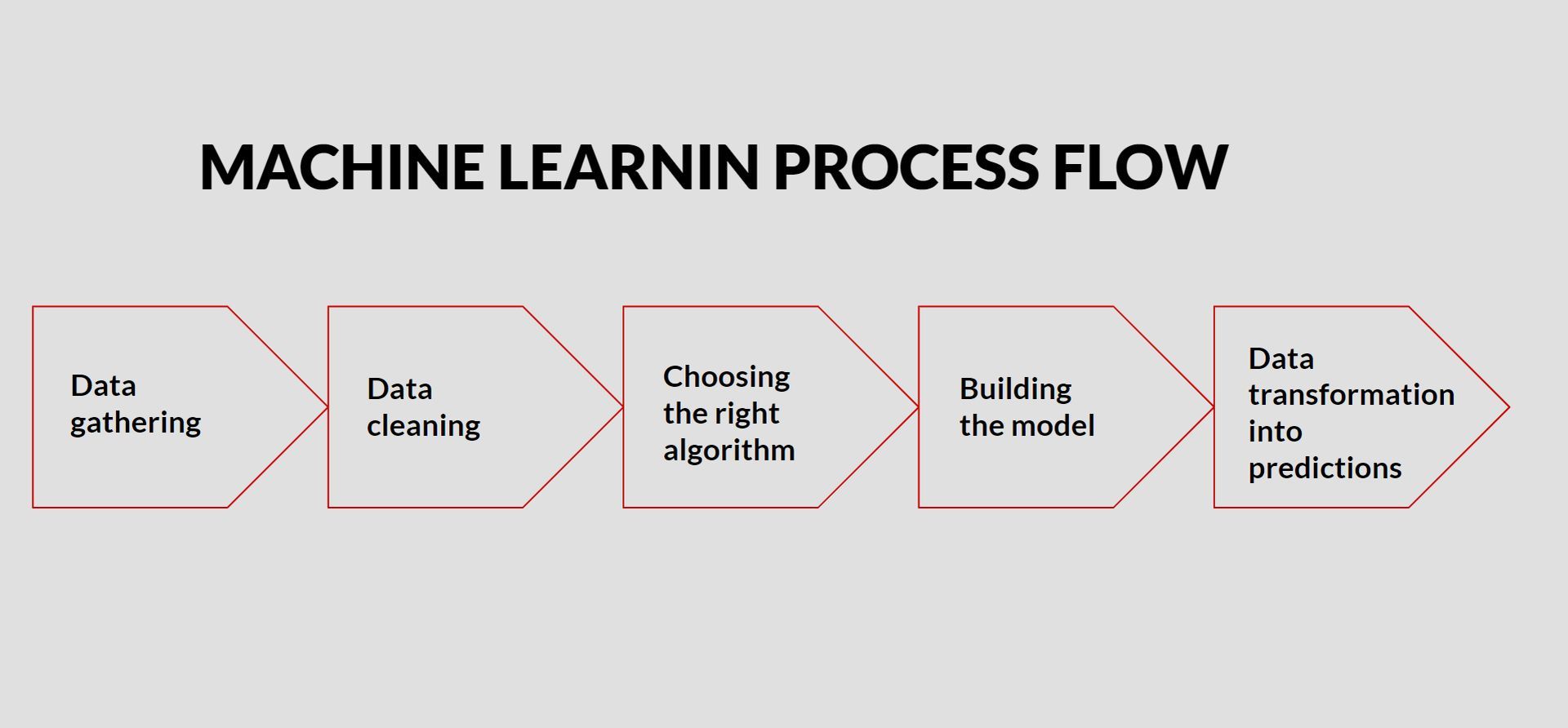Unlocking the Potential of Machine Learning in Electric Motor Design
Electric motors are a crucial component in various industries, including manufacturing, transportation, and energy production. However, traditional motor design methods often rely on trial and error, resulting in inefficient designs that waste energy and reduce overall system performance. The integration of machine learning for electric motors has the potential to revolutionize the design process, enabling the creation of more efficient, reliable, and sustainable motors.
Machine learning algorithms can be applied to electric motor design to optimize performance, reduce energy consumption, and increase reliability. By analyzing large datasets of motor performance, machine learning models can identify patterns and trends that inform design decisions. This approach enables the creation of motors that are tailored to specific applications, resulting in improved efficiency and reduced energy waste.
The benefits of machine learning for electric motors extend beyond design optimization. Predictive maintenance, a key application of machine learning, can help reduce downtime and increase productivity by identifying potential motor failures before they occur. This approach enables proactive maintenance, reducing the need for costly repairs and minimizing the impact of motor failures on overall system performance.
Furthermore, machine learning can be used to optimize motor control systems, enabling real-time adjustments to motor performance in response to changing operating conditions. This approach enables the creation of more efficient and responsive motor control systems, resulting in improved overall system performance and reduced energy consumption.
As the demand for more efficient and sustainable electric motors continues to grow, the integration of machine learning for electric motors is becoming increasingly important. By leveraging the power of machine learning, designers and engineers can create motors that meet the needs of a rapidly changing world, enabling the widespread adoption of electric vehicles, renewable energy systems, and other sustainable technologies.
How to Optimize Electric Motor Performance using Machine Learning Algorithms
Optimizing electric motor performance using machine learning algorithms involves a series of steps that enable the creation of efficient and reliable motors. The first step is data collection, which involves gathering data on motor performance, including speed, torque, and power consumption. This data can be collected from various sources, including sensors, simulations, and historical data.
Once the data is collected, feature engineering is used to extract relevant features that can be used to train machine learning models. This involves selecting the most relevant data points and transforming them into a format that can be used by machine learning algorithms. Common features used in electric motor performance optimization include motor speed, torque, and power consumption.
Next, machine learning models are trained using the extracted features. Common machine learning algorithms used in electric motor performance optimization include neural networks, decision trees, and support vector machines. These algorithms can be trained using supervised, unsupervised, or reinforcement learning techniques, depending on the specific application.
After training the machine learning models, they are deployed in the electric motor control system. This involves integrating the models with the motor control software and hardware, and configuring the system to optimize motor performance in real-time. The machine learning models can be used to optimize various aspects of motor performance, including speed, torque, and power consumption.
Successful implementations of machine learning for electric motor performance optimization include the use of neural networks to optimize motor speed control, and the use of reinforcement learning to optimize motor performance in real-time. These implementations have resulted in significant improvements in motor efficiency, reliability, and overall system performance.
For example, a study published in the Journal of Electric Motors and Control Systems demonstrated the use of machine learning to optimize electric motor performance in a wind turbine application. The study used a neural network to optimize motor speed control, resulting in a 10% improvement in motor efficiency and a 5% reduction in energy consumption.
The Role of Predictive Maintenance in Electric Motor Reliability
Predictive maintenance is a critical aspect of electric motor reliability, enabling the detection of potential failures before they occur. By leveraging machine learning algorithms, predictive maintenance can help reduce downtime, increase productivity, and lower maintenance costs. In the context of electric motors, predictive maintenance involves analyzing data from sensors and other sources to identify patterns and anomalies that may indicate a potential failure.
Machine learning algorithms can be trained on historical data to predict motor failures, enabling proactive maintenance and reducing the risk of unexpected downtime. For example, a machine learning model can be trained to detect anomalies in motor vibration data, indicating a potential bearing failure. By detecting these anomalies early, maintenance personnel can take proactive steps to replace the bearing, reducing the risk of a catastrophic failure.
The benefits of predictive maintenance for electric motor reliability are numerous. By reducing downtime, predictive maintenance can help increase productivity and reduce maintenance costs. Additionally, predictive maintenance can help extend the lifespan of electric motors, reducing the need for costly replacements. In a study published in the Journal of Electric Motors and Control Systems, researchers demonstrated the effectiveness of predictive maintenance in reducing downtime and increasing productivity in a manufacturing facility.
Machine learning algorithms can be used to predict a variety of motor failures, including bearing failures, winding faults, and overheating. By analyzing data from sensors and other sources, machine learning models can identify patterns and anomalies that may indicate a potential failure. For example, a machine learning model can be trained to detect anomalies in motor current data, indicating a potential winding fault.
The integration of machine learning into predictive maintenance workflows can be achieved through a variety of means, including the use of cloud-based platforms and edge devices. Cloud-based platforms can provide a centralized location for data storage and analysis, while edge devices can provide real-time processing and analysis of sensor data. By leveraging these technologies, predictive maintenance can be implemented in a variety of applications, from industrial manufacturing to renewable energy systems.
Real-World Applications of Machine Learning in Electric Motor Control
Machine learning is being increasingly used in electric motor control to optimize performance, improve efficiency, and reduce energy consumption. One example of a real-world application of machine learning in electric motor control is the use of neural networks for motor speed control. Neural networks can be trained to predict the optimal motor speed based on various inputs, such as load torque, motor temperature, and power consumption.
Another example of a real-world application of machine learning in electric motor control is the implementation of reinforcement learning for optimal motor performance. Reinforcement learning is a type of machine learning that involves training an agent to take actions in an environment to maximize a reward signal. In the context of electric motor control, reinforcement learning can be used to optimize motor performance by adjusting parameters such as motor speed, torque, and power consumption.
A study published in the Journal of Electric Motors and Control Systems demonstrated the effectiveness of machine learning in optimizing electric motor performance. The study used a neural network to predict the optimal motor speed based on various inputs, and achieved a 10% improvement in motor efficiency and a 5% reduction in energy consumption.
Machine learning can also be used to optimize electric motor control in various industries, such as manufacturing, transportation, and renewable energy. For example, machine learning can be used to optimize motor control in wind turbines to maximize energy production and reduce maintenance costs. Similarly, machine learning can be used to optimize motor control in electric vehicles to improve efficiency and range.
In addition to optimizing motor performance, machine learning can also be used to detect anomalies and predict failures in electric motors. By analyzing data from sensors and other sources, machine learning algorithms can identify patterns and anomalies that may indicate a potential failure. This can help reduce downtime and maintenance costs, and improve overall system reliability.
Overall, machine learning has the potential to revolutionize electric motor control by optimizing performance, improving efficiency, and reducing energy consumption. As the technology continues to evolve, we can expect to see more widespread adoption of machine learning in electric motor control applications.
Overcoming Challenges in Implementing Machine Learning for Electric Motors
Implementing machine learning for electric motors can be challenging, and several obstacles must be overcome to ensure successful deployment. One of the primary challenges is data quality issues, which can affect the accuracy and reliability of machine learning models. To address this challenge, it is essential to ensure that the data used to train machine learning models is accurate, complete, and relevant.
Another challenge is computational resource constraints, which can limit the complexity and scalability of machine learning models. To overcome this challenge, it is essential to select machine learning frameworks and algorithms that are optimized for performance and scalability. Additionally, leveraging cloud-based computing resources or specialized hardware accelerators can help to overcome computational resource constraints.
Integration with existing systems is another challenge that must be addressed when implementing machine learning for electric motors. To overcome this challenge, it is essential to ensure that machine learning models are designed to integrate seamlessly with existing control systems and infrastructure. This can involve developing custom interfaces or APIs to facilitate communication between machine learning models and existing systems.
To overcome these challenges, several best practices can be employed. First, it is essential to ensure that data is accurate, complete, and relevant. This can involve implementing data quality checks and validation procedures to ensure that data is reliable and consistent. Second, it is essential to select machine learning frameworks and algorithms that are optimized for performance and scalability. Third, it is essential to ensure that machine learning models are designed to integrate seamlessly with existing control systems and infrastructure.
By following these best practices, it is possible to overcome the challenges associated with implementing machine learning for electric motors. By leveraging machine learning, electric motor manufacturers and operators can improve efficiency, reduce energy consumption, and increase reliability. As the technology continues to evolve, we can expect to see more widespread adoption of machine learning in electric motor applications.
In addition to these best practices, several tools and technologies can be employed to support the implementation of machine learning for electric motors. For example, machine learning frameworks such as TensorFlow, PyTorch, and Scikit-learn can be used to develop and deploy machine learning models. Additionally, cloud-based computing resources and specialized hardware accelerators can be used to support the computational requirements of machine learning models.
Future Directions for Machine Learning in Electric Motor Technology
As machine learning technology continues to evolve, we can expect to see significant advancements in electric motor technology. One potential future direction is the integration of machine learning with edge AI, which enables real-time processing and analysis of data at the edge of the network. This can enable faster and more efficient decision-making, and can be particularly useful in applications where latency is critical, such as in autonomous vehicles or industrial automation.
Another potential future direction is the development of autonomous motor control, which enables electric motors to operate independently without human intervention. This can be achieved through the use of machine learning algorithms that can learn and adapt to changing operating conditions, and can be particularly useful in applications where reliability and uptime are critical, such as in data centers or hospitals.
The integration of machine learning with other emerging technologies, such as IoT and robotics, is also a promising area of research. For example, machine learning can be used to optimize the performance of IoT devices, such as sensors and actuators, and can be used to control and coordinate the actions of multiple robots in a manufacturing or logistics setting.
Additionally, the use of machine learning in electric motor design and optimization is expected to continue to grow, as manufacturers seek to improve efficiency, reduce energy consumption, and increase reliability. This can be achieved through the use of machine learning algorithms that can optimize motor design parameters, such as winding configuration and magnetic field strength, and can be used to predict and prevent motor failures.
Overall, the future of machine learning in electric motor technology is exciting and promising, with many potential applications and opportunities for innovation. As the technology continues to evolve, we can expect to see significant advancements in efficiency, reliability, and performance, and can expect to see machine learning play an increasingly important role in the design and optimization of electric motors.
In order to realize the full potential of machine learning in electric motor technology, it is essential to continue investing in research and development, and to encourage collaboration and innovation between industry, academia, and government. By working together, we can unlock the full potential of machine learning and create a more efficient, reliable, and sustainable future for electric motor technology.
Comparing Machine Learning Frameworks for Electric Motor Applications
When it comes to implementing machine learning for electric motor applications, there are several frameworks to choose from. In this section, we will compare three popular machine learning frameworks: TensorFlow, PyTorch, and Scikit-learn.
TensorFlow is a widely-used open-source framework developed by Google. It is particularly well-suited for large-scale deep learning applications and is widely used in the industry. TensorFlow has a large community of developers and users, which means there are many resources available for learning and troubleshooting.
PyTorch is another popular open-source framework that is known for its ease of use and flexibility. It is particularly well-suited for rapid prototyping and development, and is widely used in the research community. PyTorch has a smaller community of developers and users compared to TensorFlow, but it is still a popular choice for many applications.
Scikit-learn is a popular open-source framework that is specifically designed for machine learning tasks. It is widely used in the industry and is known for its ease of use and flexibility. Scikit-learn has a large community of developers and users, and is widely used for tasks such as classification, regression, and clustering.
When choosing a machine learning framework for electric motor applications, there are several factors to consider. These include the type of application, the size and complexity of the dataset, and the level of expertise of the development team. TensorFlow and PyTorch are both well-suited for large-scale deep learning applications, while Scikit-learn is better suited for smaller-scale machine learning tasks.
In terms of electric motor applications, TensorFlow and PyTorch are both well-suited for tasks such as motor control and optimization, while Scikit-learn is better suited for tasks such as predictive maintenance and fault detection. Ultimately, the choice of framework will depend on the specific needs and requirements of the application.
It’s worth noting that all three frameworks have their strengths and weaknesses, and the choice of framework will depend on the specific needs and requirements of the application. However, by considering the factors mentioned above, developers can make an informed decision about which framework to use for their electric motor application.
Best Practices for Integrating Machine Learning into Electric Motor Design Workflows
Integrating machine learning into electric motor design workflows requires careful planning and execution. Here are some best practices to consider:
Data Management: Proper data management is critical for successful machine learning integration. This includes collecting and storing relevant data, ensuring data quality, and using data visualization techniques to understand the data.
Model Validation: Model validation is essential to ensure that the machine learning model is accurate and reliable. This includes testing the model on a variety of datasets, evaluating its performance using metrics such as accuracy and precision, and refining the model as needed.
Collaboration between Data Scientists and Engineers: Collaboration between data scientists and engineers is critical for successful machine learning integration. Data scientists can provide expertise in machine learning algorithms and data analysis, while engineers can provide expertise in electric motor design and operation.
Use of Machine Learning Frameworks: Using machine learning frameworks such as TensorFlow, PyTorch, or Scikit-learn can simplify the integration process and provide access to pre-built algorithms and tools


